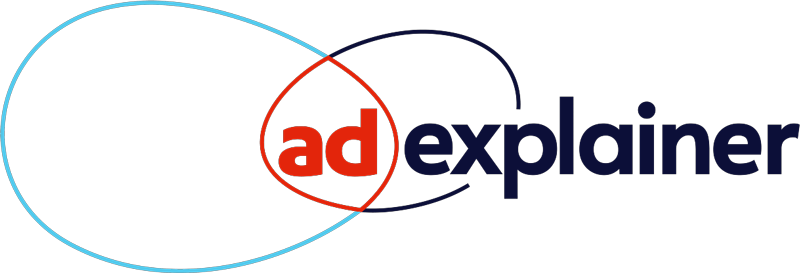It’s likely not a huge shock to anyone that trustbusting is on the rise. After all, some historians already feel the US is in a “second gilded age,” marked by the same kind of extreme income inequality that defined the late 19th century.
But it might be surprising to learn the government fights against monopolies the same way now as it did back then – partly because the laws haven’t needed to change all that much.
“You can apply those concepts to whether someone’s building railroads or someone is building a search engine,” said Gary Kibel, a partner at advertising-focused law firm Davis+Gilbert.
Defining the terms
A monopoly is a specific economic structure where one company controls an entire industry or sector with no oversight, often working to shut down all possible competition to maintain its dominance.
As a semi-hypothetical example, imagine there was a single ad platform that all media buyers, marketers and publishers were required (or felt compelled) to bid through.
This platform might have achieved its status by engaging in monopolistic business tactics, such as buying other companies up and down the supply chain, known as vertical integration. It may also only sell its product or service on the condition that buyers also purchase another of their offerings, known as a tying arrangement.
The barrier to entry may therefore be too high for a new startup to grab market share for itself. The ad platform could also use intimidation to drive others out of business, such as by signing exclusive agreements to block competitors or engaging in predatory pricing and selling at an outrageously low cost.
But monopolies are problematic not just for their ability to stifle competition. If you’re the only game in town, you can also charge your customers unreasonably high rates for lower-quality products with little to no pushback, and you have no incentive to create new or better products.
(In unrelated news, has anyone else noticed how Google Search seems to be getting worse?)
A brief history lesson
The history of antitrust legislation in the US started with the Sherman Antitrust Act in 1890. Interestingly, it was called “antitrust” rather than “anti-monopoly” because it specifically targeted the Standard Oil Trust formed by John D. Rockefeller, which was later dissolved in 1892.
Section 1 of the Sherman Act outlaws “every contract, combination, or conspiracy in restraint of trade,” which the Supreme Court later clarified as only referring to “unreasonable” restraints of trade. Section 2 outlaws any “monopolization, attempted monopolization, or conspiracy or combination to monopolize.”
Later, in 1914, the Federal Trade Commission was created to prevent “unfair methods of competition” and “deceptive acts,” including fraud. The Clayton Act, also passed in 1914, further prohibits mergers and acquisitions that would create monopolies.
Today, federal antitrust cases are typically brought to court by the Department of Justice’s Antitrust Division. Sometimes, however, the FTC will also bring their own cases separately, based on the understanding that all Sherman Act violations also violate the FTC Act on a transitive basis.
Past battles
Antitrust trials are typically a pretty big deal, both inside and outside the specific industry in the crosshairs. Companies accused of monopolistic business practices are typically very heavy hitters – with coffers full of cash to prove it.
“It’s not the FTC going against some ad tech startup because they don’t like the way they’re collecting location data,” said Kibel. “You’re dealing with very big players that have endless resources to fight the issue.”
Where the tech industry is concerned, there have been several notable antitrust cases in the past, including:
– United States v. AT&T (1982), which led to the divestiture of the Bell System of telecommunications companies into seven smaller, regional “baby bells.”
– United States v. Microsoft (2001), which argued that Microsoft had monopolized the web browser market by forcing PC manufacturers to keep Internet Explorer automatically installed with Windows – one of those tying arrangements, in other words. The District Court ordered that Microsoft be broken up into two companies, but this was later appealed in the Circuit Court and replaced with a smaller penalty.
– United States v. Google (2023), in which judge Amit Mehta recently ruled that Google violated Section 2 of the Sherman Act by maintaining an illegal monopoly over the search market. Hearings to discuss potential remedies only just began on September 6, but there’s already been some talk of breaking off parts of Google.
More’s on the way, too, including several open cases against Meta, Apple and Microsoft – to say nothing of the Google ad tech antitrust trial beginning on September 9, of course.
The future of monopolies
The recent uptick in new antitrust cases is in part related to the dual appointments of FTC Chair Lina Khan and DOJ Antitrust chief Jonathan Kanter, both in 2021. Likewise, enforcement will often ebb and flow as each new presidential administration shifts its priorities.
But another explanation for the increase – which some even cite as a reason to update existing antitrust laws – is that technology evolves so rapidly that it’s hard for even monopolies (alleged monopolies) to keep up with.
“No one else was gonna come up and build a competing railroad system overnight, because that takes a tremendous amount of resources and physical materials,” said Kibel.
But not so in the tech world, which is characterized by fast-paced innovation.
Which isn’t to say tech companies won’t be affected by more rulings like the one Judge Mehta just handed down against Google. A more heightened focus on trustbusting will likely have a chilling effect on future mergers and acquisitions, which already need approval from the FTC under the Hart-Scott-Rodino Antitrust Improvements Act of 1976.
In the meantime, Kibel recommended that ad industry professionals be mindful of the contracts they enter into, especially where mergers are concerned.
“Not everything is fair game,” he told AdExchanger. “You need to consider, ‘Am I going to possibly be stepping over that antitrust line based on this proposed business deal?’”



















